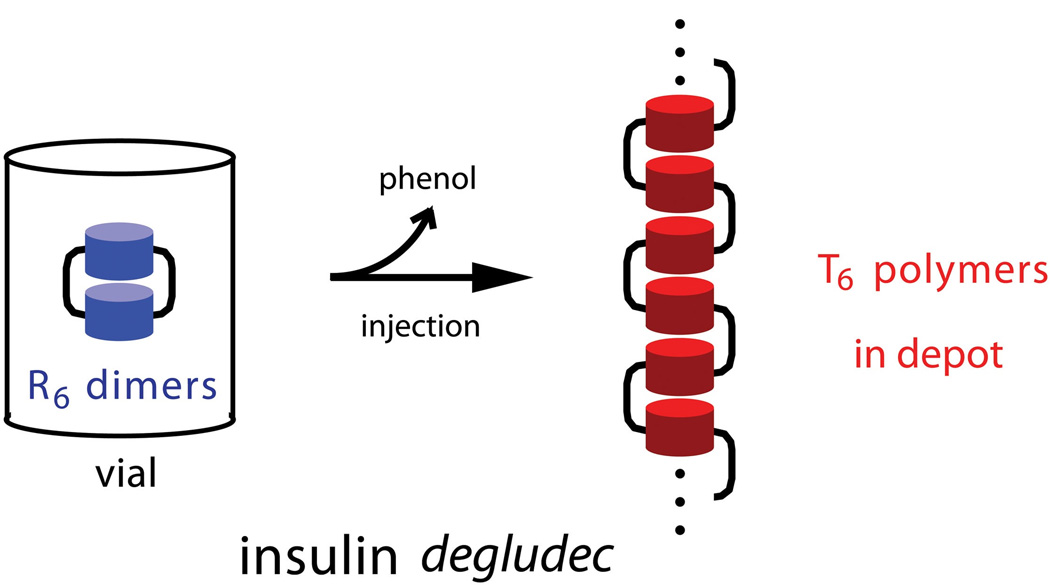Figure 5.
Exploiting the TR transition in supramolecular protein engineering: schematic representation of the mechanism of insulin degludec. Left, Insulin degludec is formulated at neutral pH as dimers of phenol- (or meta-cresol) stabilized R6 zinc insulin hexamers (blue). The acyl modification of LysB29 is shown in schematic form as a black bar (in principle 6 per hexamer); for simplicity only two are shown. Right, On subcutaneous injection, diffusion of the phenolic ligand into cellular membranes triggers the R →T transition, leading in turn to linear polymerization of T6 zinc hexamers (red). Classical hexamer reorganization is thus coupled to a change in mode of hexamer-hexamer assembly mediated in part by the B29-linked acyl group. Panels A and B are reprinted by Wan and colleagues 117 with permission of the authors.

